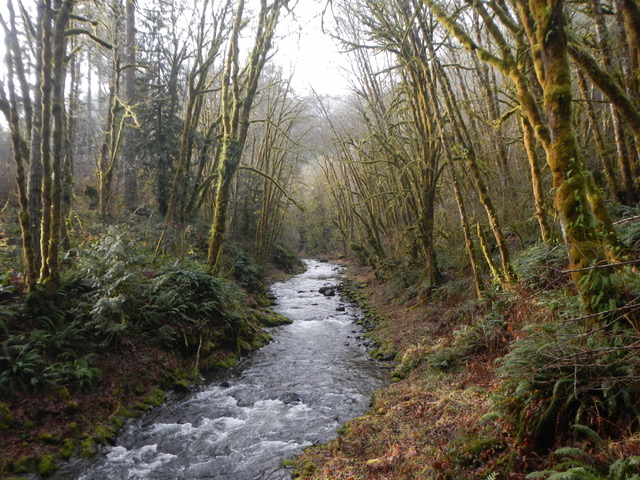
By: Margie Van Cleve, Washington State Sierra Club Conservation Chair
The Chehalis River Basin Flood Control Zone District and the Lewis County Commissioners have proposed building a dam on the Chehalis River. Located in Southwestern Lewis County, halfway between Seattle and Portland, the Chehalis headwaters start on the west slope of the Cascades and flow west to Greys Harbor estuary. Due to its historic wild Chinook salmon and steelhead runs, the River Basin is important to both fisherman and our endangered Southern Resident orca.
But despite its ecological importance, over the last two decades, the Chehalis has become well known for flooding. This has led to multiple I-5 closures south of Centralia, often for days at a time. Now, local flood control agencies are proposing a billion-dollar-dam to reduce future flood damage.
However, the construction of such a dam will have significant consequences, such as the degradation of fish habitat, a reduction in fish populations, decreased water quality, changes to natural river processes, increased greenhouse gas emissions, wetland alterations, and the decimation of wildlife habitat. The Chehalis Tribe was already on record as opposing this dam. Last Thursday, the Quinault Indian Nation also came out in opposition to the dam proposal.
“Fishing for salmon to nourish and provide for our families is at the core of what it means to be Quinault and is a Treaty right we had to fight for decades to exercise. Extinction is not an option,” said Quinault Nation Vice President Tyson Johnston. “We are not strangers to the devastating impacts of flooding on communities, infrastructure and safety so we remain committed to finding solutions that reduce the threat of catastrophic floods for the most at-risk communities.”
According to the Quinault Indian Nation press release, “Despite a decline in salmon runs of 80% over the last 30 years, the Chehalis River Basin remains one of the most important producers of wild fish in Washington State and is one of the few places left in the state where no salmon species are currently listed as threatened or endangered.”
Clearly, the proposed plan is flawed. The impacts and costs are high, yet the benefits of the proposed dam are comparatively small.
Although the dam would reduce highway closure times to 24 hours, the proposed project would protect only 635 structures out of thousands in the floodplain. Areas that have been heavily impacted by past floods will continue to experience significant flooding. Because basin-wide flooding issues aren’t limited to just the Chehalis River, the dam would only moderately mitigate, not eliminate, I-5 flooding.
In addition, the proposed project won't generate hydropower, doesn't store water for irrigation, and won't provide any recreation opportunities. In short, the project is an expensive and ill-conceived effort to address a complex problem that can't be solved by a new billion-dollar dam. In an era of decreased government revenues due to Covid-19, the State of Washington has better ways to spend one billion dollars than on a dam that increases rather than decreases the damage to our environment.
Local government and the State of Washington should cease efforts to dam the Chehalis. Instead, it should focus on comprehensive solutions that include:
-
enhancing natural floodplain storage capacity, along with floodproofing I-5's most at-risk stretches.
-
providing mitigation and assistance to landowners in the floodplain
-
investing in habitat restoration
-
removing culverts and investing in de-channelization (spreading the river back out where it has been artificially narrowed)
-
stopping new floodplain development
-
improving opportunities for the public to use and enjoy private forest lands for recreation.
Healthy rivers, vibrant fish runs, and outdoor recreation are keystones to the quality of life in the Pacific Northwest. We should be seeking ways to secure these values for the future, instead of risking it on an expensive, inefficient, and ecologically-destructive dam.
How to Get Involved:
-
Sign this alert. The public comment period on the EIS runs until May 27.
-
Join the April 21st online hearing to speak out against the dam
-
The online event will take place on April 21st beginning at 5 p.m with a 45-minute presentation. Starting about 5:45 p.m., they will take public comment via the webinar until 8:30 p.m. Participants are limited to two minutes each. Please sign up to join the webinar and learn more.
-
Review the Draft Environmental Impact Statement (the 19 page Summary Document is particularly relevant).
Picture credit to Lee First of Twins Harbors Waterkeeper